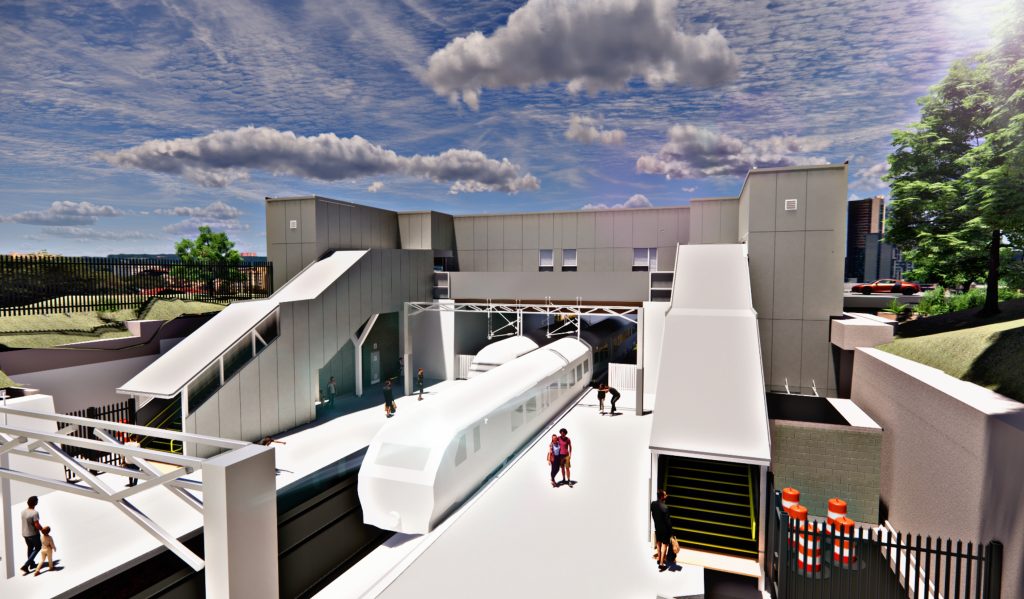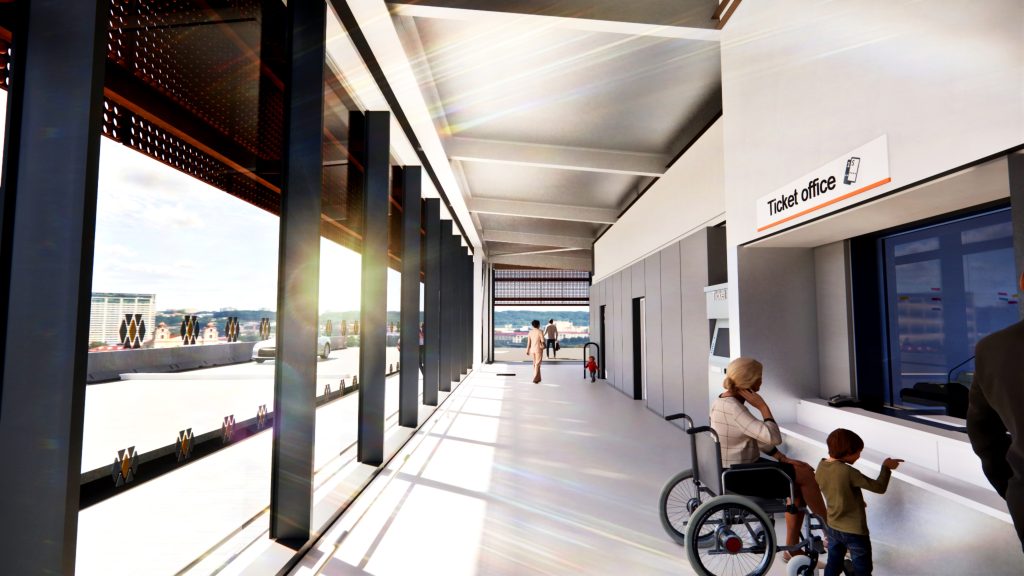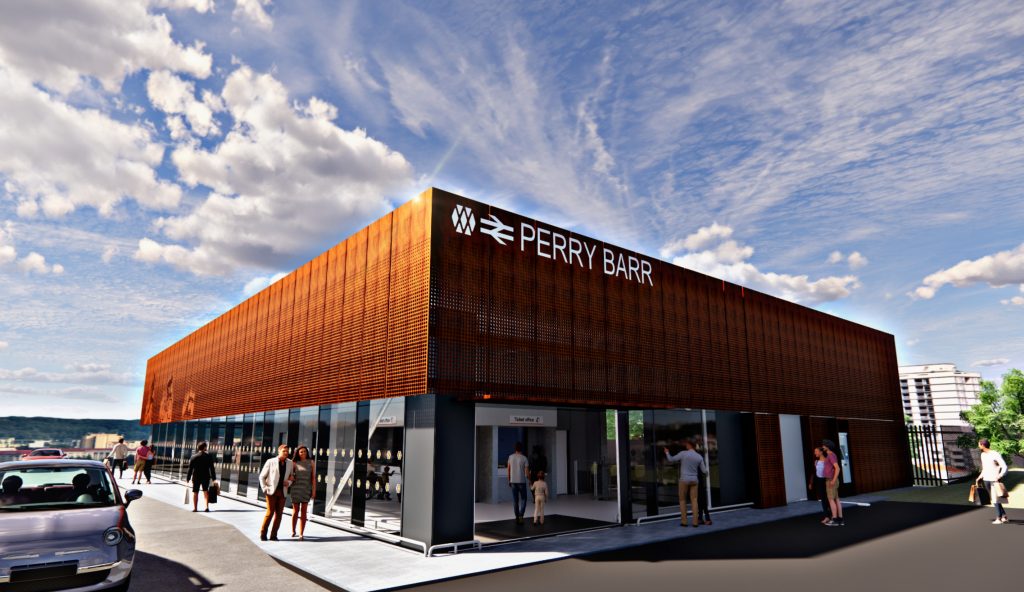Galliford Try, Perry Barr Station Redevelopment
A major redevelopment took place at the existing Perry Barr Station, led by Transport for West Midlands and West Midlands Rail Executive. The new station replaces the old, tired building, which suffered from poor access and a lack of facilities.
Client Brief
£700m+ regeneration
The station redevelopment is part of a wider £700m+ regeneration of the Perry Barr area, led by Birmingham City Council. It also includes a new road layout, thousands of new homes and the development of a brand-new bus interchange outside the One Stop Shopping Centre.
The station will have improved accessibility with new lifts and stairs providing access from the new concourse at road level down to platform level. The concourse will be staffed for ticketing and fares and facilities such as a toilet and baby changing room are provided as part of a new internal accommodation block within the concourse.
The public realm between the railway station, bus interchange and local shops will also be redeveloped to provide an inviting space for station and bus users.
Project Overview
Lead design organsation
Morson Praxis acted as the Lead Design Organisation, providing full multi-disciplinary design services for Galliford Try, who served as the main contractor on the project. Our team took on the role of Lead Designer, responsible for managing and completing the remaining elements of the GRIP 3 design stage.
Following this, we successfully progressed the scheme through the subsequent design stages, ensuring alignment with project objectives and stakeholder requirements. Throughout the design process, we maintained close collaboration with Galliford Try and other key parties. As a result of this coordinated effort, Galliford Try made strong progress during the construction phase on site.
Image Gallery
From concept to completion, a truly multi-disciplinary solution.




Our Solution
Leveraging data to ensure accuracy
Morson Praxis were appointed by Galliford Try to deliver a range of comprehensive services for the project, including Architecture and Design, Civil and Structural Engineering, Mechanical and Electrical Building Services Design, Principal Designer duties, and Digital Surveying.
In addition to our in-house capabilities, we also managed several third-party specialist services to support the wider project requirements. These included Fire Engineering, Acoustics, Station Security and Information Systems, Earthing and Bonding, as well as site investigations, CCTV inspections, jetting, and underground services surveys. Our role ensured a fully integrated approach, coordinating all disciplines to meet the project’s technical, safety, and operational needs.
Results
Value engineered
The project featured several key interfaces, including the creation of new public open space connecting the bus interchange, station, and platform access—all designed in full accordance with Secure by Design and Safety in Design of Stations (SIDOS) criteria. The scheme followed Network Rail’s GRIP process, which provided design assurance throughout its development. Morson Praxis took over the project midway through GRIP Stage 3, capturing and driving its evolution from that point forward.
Morson Praxis were responsible for developing the safety, fire, and access strategies for the station. This work was supported by our in-house pedestrian flow modelling capabilities, which proved invaluable in informing design decisions and ensuring safe, efficient passenger movement through the public concourse areas—complete with welfare facilities.
The economic design of the new station benefitted from extensive value engineering, including the use of a hybrid lightweight steel framing system (SFS). The cladding design was also optimised through the specification of new materials and a complete redesign of the access strategy to improve constructability and performance.
Our team maintained strong collaboration with sub-contractors throughout the project, fostering an integrated working environment. Morson Praxis were also actively involved in the introduction of a new Station Information and Security Systems (SISS) solution, currently being implemented by the West Midlands Combined Authority (WMCA), with expectations that it will be adopted across future station developments in the region.
As lead of the multi-disciplinary design team, Morson Praxis played a central role in navigating the complex infrastructure interfaces and stakeholder engagement required to successfully deliver this ambitious station redevelopment.

